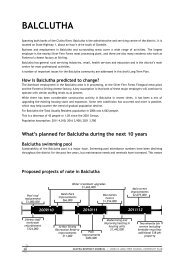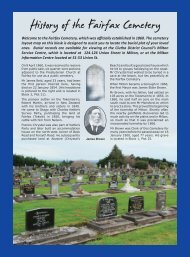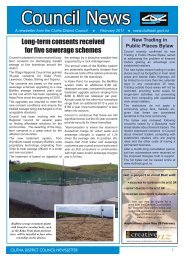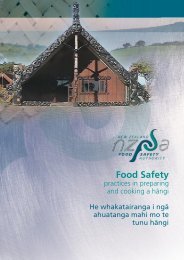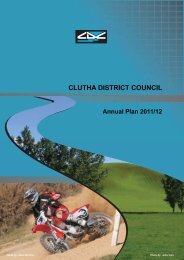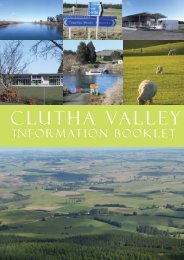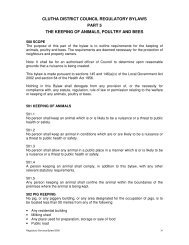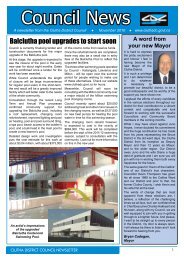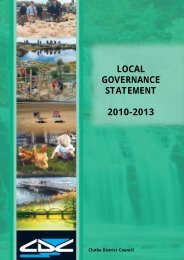Lawrence Cemetery - Clutha District Council
Lawrence Cemetery - Clutha District Council
Lawrence Cemetery - Clutha District Council
You also want an ePaper? Increase the reach of your titles
YUMPU automatically turns print PDFs into web optimized ePapers that Google loves.
From early on, the <strong>Lawrence</strong> <strong>Cemetery</strong> was sectioned<br />
into religious denominations, with a separate section<br />
for the Chinese. Some 4,000 Chinese miners had<br />
arrived in Otago by 1871, but were largely separate<br />
from the European community, culminating in a Poll<br />
Tax being charged on every Chinese immigrant to<br />
New Zealand from 1891. This Poll Tax was eventually<br />
waived from 1934 and repealed in 1944.<br />
Most Chinese buried before 1902 were disinterred<br />
to be shipped home in order carry out the age-old<br />
Chinese custom to be buried in the soil in which<br />
they were born. There were two mass disinterments<br />
of Chinese bodies throughout New Zealand - one<br />
completed in 1883 and another in 1902. The steamer<br />
Ventnor, carrying the coffins of about 500 resurrected<br />
Chinese to Hong Kong sank off Hokianga, Northland<br />
on 28 October 1902, with the loss of nearly all of<br />
the remains<br />
For many years, few remnants of the Chinese section<br />
of the <strong>Lawrence</strong> <strong>Cemetery</strong> remained as headstones<br />
and records disappeared, until the <strong>Lawrence</strong> 125th<br />
anniversary in 1986 when schoolchildren cleared<br />
the overgrowth. In 2002, members of the public<br />
undertook further restorative work and the Chinese<br />
Section has been kept tidy since.<br />
The tomb of one of <strong>Lawrence</strong>’s most recognisable Chinese characters,<br />
Sam Chew Lain, dominates surrounding graves at this cemetery,<br />
although this is located in the Presbyterian Section.<br />
Sam had been a miner at Victoria in Australia before coming to Otago<br />
in the 1860s to mine at Munro’s Gully. He was a well known individual<br />
in <strong>Lawrence</strong> and joined another Chinese man named Wong On in the<br />
hotel trade where they owned and managed the Chinese Empire Hotel<br />
at the <strong>Lawrence</strong> Chinese Camp. Sam was naturalised in 1872 and later<br />
that year married a local girl, Amelia Newbiggins, in one of the first<br />
mixed race marriages in the area.<br />
Sam died on 15 March 1903 and his obituary stated that he had “quickly<br />
established a reputation for thorough honesty and scrupulous exactness<br />
in business matters … to his countrymen and Europeans alike he has<br />
proved in many cases a friend indeed and stories of large hearted<br />
generosity are legion”.<br />
On his death, Sam’s Lodge, the St George Masonic Brotherhood, erected<br />
a plaque to him. His estate built his tomb of limestone block walls and<br />
a slate roof. His wife, Amelia, was also interred there upon her death<br />
in July 1913.<br />
CLUTHA DISTRICT COUNCIL<br />
Golden Celebration • www.celebrategold.co.nz • 18 - 21 March 2011




